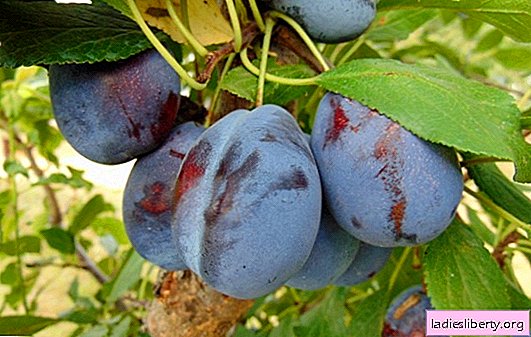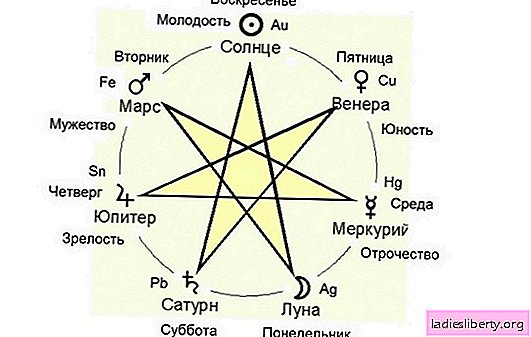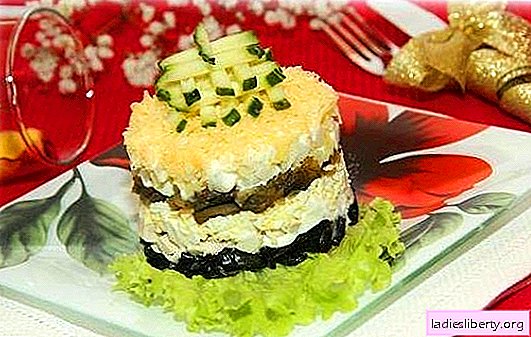
Hungarian plum grows everywhere, except in regions with harsh winters. This is an ordinary home plum that was brought into Russia in 1900 from Hungary. Today there are many varieties of this variety, all of them have their own advantages and disadvantages. We’ll talk about them.
Hungarian plum: the most popular and frost-resistant varieties
All varieties of Hungarian plums are similar to each other. The fruits of the tree are ovoid, dark purple. These are the best grades for making prunes. Here are the most popular tree varieties that are grown in central Russia:
• Moscow;
• Belarusian;
• Wangeheim.
Hungarian Moscow or Tsaritsyn has good winter hardiness. The tree is self-fertile, does not require pollination. Fruits dark red fruits, which are suitable for the preparation of pastille, jams, preservation. Fruits of medium size, the skin is coated with a coating. Pulp of amber color, juicy, sweet and sour taste.
The variety is resistant to diseases and weather changes. The tree is well restored after a harsh winter, not demanding in care. The yield of an adult tree is up to 40 kg per season.
The disadvantage of the Moscow Hungarian is late fruiting. The first plum crop can be harvested after eight years of cultivation.

ATHungarian Belarusian suitable for cultivation in the northwestern regions of Russia. This unpretentious variety rarely gets sick, practically does not get affected by pests, and tolerates winters and thaws. Fruits the tree with beautiful dark fruits with bright yellow pulp. The plums are sweet to taste, but some acidity is present.
The variety is self-fertile with good yield. An adult tree gives up to 35 kg of fruit, which fully ripens in late summer. Plums are suitable for drying and processing.
The advantage of the variety is the early onset of fruiting. Four years after planting, you can harvest the first crop. No flaws were noticed.
ATHungarian Wanheim It is considered the most hardy. The tree develops rapidly and begins to bear fruit early. In one five-year tree, you can collect up to 20 kg of fruits. Productivity increases with the age of the tree. Its peak falls on the tenth year of cultivation, when at least 70 kg is collected per season.
The tree bears fruit in dark blue plums, the taste of which exceeds all expectations. This is a sweet variety that is suitable for preparing prunes and canning.
The advantage of the Hungarian Wangeheim is the ability of the fruit to stay on branches for a long time. Even overripe plums do not crumble.
Hungarian plum varieties for the southern regions
The most popular varieties in the southern regions are:
• Voronezh;
• Amazing;
• Korneevskaya.
Hungarian Voronezh was bred as a result of selection of varieties "Greengage" and "Red early ripening." A variety for warm regions with mild winters. The tree has a late flowering period, bears fruit in large dark fruits. Plums are very tasty, juicy, aromatic. They are removed from the tree in the stage of technical ripeness, the crop matures during storage.
The disadvantages of the variety are self-infertility and a tendency to freeze flower buds. For a good harvest, pollinators with a suitable flowering period are required.
Late grade Hungarians Amazing widespread in warm regions. The tree is self-fertile, requires cross-pollination. Plums of medium size, dark in color with green flesh. The taste is excellent, moderately sweet. The variety is resistant to drought.
The disadvantage of Hungarian is amazing is the poor maturation of wood, shoots often freeze during winter thaws.
Hungarian Korneevskaya refers to fully self-fertile varieties. Fruits early, already in the fifth year of cultivation. Plums of late ripening ripen by the end of August. The fruits are large, amber-colored flesh, juicy and tasty.

The dignity of the variety is resistance to drought and good resistance to disease. Among the shortcomings, freezing of flower buds and the fragility of the tree were noticed. After 12-15 years, the drain should be replaced.
The most fruitful varieties of plum hungarian
Varieties with good productivity include varieties of Hungarian:
• Italian;
• Pulkovo;
• Azhansky.
Hungarian Italian refers to heat-loving varieties that do not tolerate frost. Good fruiting plum in Sochi. Fruits are large with a small bone, excellent taste. Tree productivity is higher than 50 kg per season. There were cases that the number of fruits reached 200 kg.
The variety is self-fertile, mid-season, does not tolerate drought. This plum produces the most delicious and fleshy prunes.
Among the shortcomings of the Hungarian Italian marked poor winter hardiness, disease resistance.
Hungarian Pulkovskaya Fruits in medium-sized fruits. Plums are dark red with a characteristic bloom, the flesh is yellow, sweet and sour. The variety is intended only for processing, in fresh form the quality of the fruit is not high.
The tree begins to bear fruit in the fifth year of cultivation, the average yield of more than 25 kg. The variety is self-fertile, does not require pollinators. Productivity is growing every year, fruiting is stable.

Among the shortcomings revealed low resistance to pests, instability to fungal diseases, poor winter hardiness and susceptibility of fruits to cracking.
Hungarian Azhansky famous for early and abundant fruiting. Already in the fifth year of growing from a tree, you can collect up to 25 kg of plum. Peak fruiting occurs in 10-12 year of cultivation, when the tree gives more than 70 kg of plums.
The variety is self-fertile, but the presence of pollinators is welcome. Fruits are large with a waxy coating, dense. The pulp is a greenish tint, without fibers, moderately juicy, sweet. Plums are well kept fresh, tolerate transportation.
The advantage of the variety is the ability of the fruit to stay on branches for a long time, even overripe plums do not crumble. The disadvantage of Hungarian Azhansky is the tendency to fungal diseases and cracking of fruits. This is especially noticeable in rainy summers.
Features of planting and growing Hungarian plums
Hungarian plum is planted on the southern side of the site, avoiding lowlands where snow and rainwater will accumulate. The root system of the tree does not tolerate the proximity to groundwater. It is best to place the seedling on an elevated position.
Hungarian grows and develops well on loose fertile soils with normal acidity. Seedlings are placed at a distance of four meters from each other, since the tree is tall. The planting pit is filled with fertile soil, which is pre-mixed with mineral fertilizers.

Hungarian care is unpretentious, fairly standard procedures. During the season, the tree is watered 3-5 times, depending on the weather. Old trees are watered more abundantly than young trees. One adult plant takes up to 10 buckets of water.
To protect the plum from diseases, do not forget about preventive treatments in the spring until the buds open. Use complex preparations: Fitoverm, Akarin other. Spraying is repeated as necessary.
They feed the plum according to certain rules:
• every three years they bring in organic matter;
• every two years, mineral complexes are added.
Until the age of four, the dose of fertilizer is halved, after which the rate is calculated on an adult plant.











